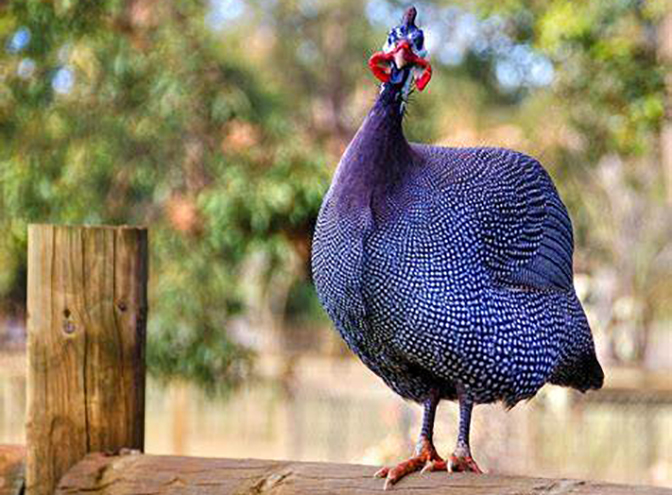Helmeted Guinea Fowl (Numida meleagris)

Range: The helmeted or domestic guinea fowl is originally from a wide range in sub-Saharan Africa, where it is commonly hunted as a game bird, as are other wild species of guinea fowl. However, the helmeted guinea fowl has also been domesticated. They live in semi-open habitats such as savanna or semi-deserts, while some, such as the black guinea fowl, mainly inhabit forests. Some perch high on treetops. The helmeted guinea fowl has been introduced in East Africa, the West Indies, the United States, Britain, and India, where it is raised as food or pets.
Description: The Helmeted Guinea Fowl has a bony, helmet like structure on its head rather than a crown of feathers. They have red and blue patches of skin and could also have a slight wattle. The body plumage is grey spangled with white spots, wings are short and rounded and the tail is also short.
Diet: Helmeted guinea fowl can walk 10 km and more in a day, and are great runners. They make loud harsh calls when disturbed. Their diet consists of a variety of animal and plant food; seeds, fruits, greens, snails, spiders, worms and insects, frogs, lizards, small snakes and small mammals.
Lifespan: As with all of the Numididae, they have no spurs which can make them less defensive against predators. They may live for up to 12 years in the wild, and 15-17 years in captivity.